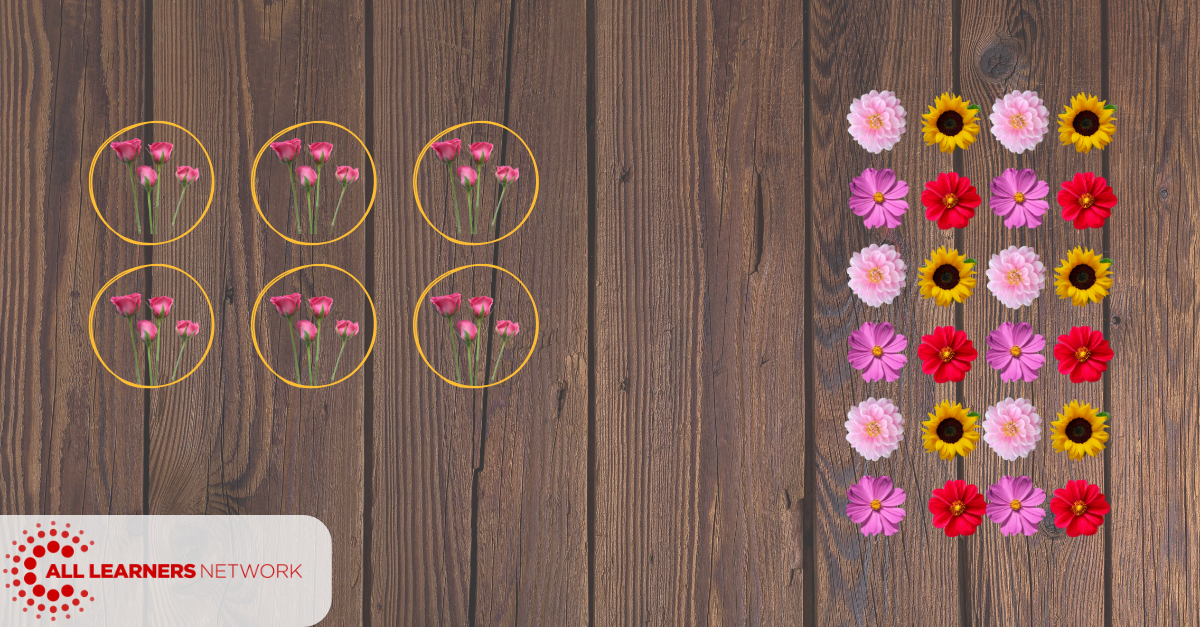
Leveraging Launch and Games for Multiplication Fact Fluency
Published: May 23, 2025
In traditional math instruction, math facts were taught as isolated facts that must be memorized. Often, a classroom teacher had some system to track the “fact groups” that each student had mastered. You probably remember the system that your own teacher used to track your progress, maybe even a sticker chart hanging publicly for everybody to see. This tracking system was designed by your teacher with good intentions to incentivise memorizing facts, but likely brought anxiety and stress for many students.
Before diving in too deep, we should clarify the terms used within the Common Core State Standards for Math; fluency and automaticity. Automaticity is the instant recall of a fact, but the road to automaticity lies in fluency. Fluency is the ability to flexibly, efficiently, and accurately recall a fact. When a student has fluency it essentially means they have a strategy to quickly find the answer to a math fact. For instance, if asked to solve 5x7 they may remember that 5x6 is 30 and then add another group of 5 to get 35.
The importance of learning math facts has not changed, but the methods for teaching should focus on fluency. Teaching math facts in a way that capitalizes on the relationships between equations, the properties of operations, and the models (array and area model) that drive sense making is the key to success for all students.
The All Learners Network (ALN) High Leverage Concepts (HLC) Progressions for grade 3 clearly illustrate both the importance of the properties of operations (page 3) and the relationship between equations (page 4), so let’s focus more on how we can intentionally create instruction to build upon student understanding. This work is often best done through an inclusive launch or number sense routine and through the use of targeted and general practice games.
Launch Series for Illustrating the Commutative Property of Multiplication
At ALN, we spend the first 5-15 minutes of each math block engaging in number sense routines. We refer to this time as Launch, and it is a great vehicle for student discourse and discovery around learning math facts. Through intentionally designed all-inclusive launches, students can discover the relationships and properties of operations that will help build fluency around math facts. The following example illustrates how a series of Launches were designed for students to engage with the commutative property. Each Launch is accessible to all students while also illustrating an important component around the understanding of the commutative property. Depending upon the students’ prior understanding, a teacher could choose to use one or all three of these Launches over the course of a few days to facilitate conversation around the commutative property. As always, a teacher must anticipate what their students will say and how they will best notate student thinking to show the relationships and connections that students make.
Consider how the following three Launch images could initiate student discourse leading to understandings around commutative property of multiplication:
- What might students notice?
- How might you notate student thinking to illuminate student observations?
- What guiding questions might you ask?
%20(86).png?width=1200&height=627&name=Hero%20Images%20(WebsiteBlogEmails)%20(86).png)
You likely noticed that each of the three Launches represents a visual model of 6 x 4, but the models within each Launch varied. In Launch A, students may notice that both models show 6 x 4, but some may notice that the area model lends itself to both 6 x 4 and 4 x 6, showing the commutative property more clearly. Both Launch B and C leave the expression off, allowing students to determine the expression that matches the model. The models within each launch are the same, exemplifying how 6 x 4 and 4 x 6 “look different” in the equal groups model, while the area model looks the same for both expressions. The deep student discourse that occurs during launches similar to these sets the stage for making sense of the properties of operations.
Launch Series for Illustrating Relationships Between Facts
Consider how using the following Launch images in succession could initiate student discourse leading to understandings around multiplying by four as “double the double.”:
- What might students notice?
- How might you notate student thinking to illuminate student observations?
- What questions might you ask?
%20(85).png?width=1200&height=627&name=Hero%20Images%20(WebsiteBlogEmails)%20(85).png)
Imagine that you use these two Launch images on Monday. What Launch images may you choose to use on Tuesday to further solidify the connection between multiplying by 2 and multiplying by 4?
Using Games for Practice
Games play a critical role in math practice and are an important component to teaching math facts conceptually. There are two types of practice in terms of math facts: general and targeted. General practice games are any games that include all the facts, while targeted practice games focus on specific strategies or groups of facts. Both types of practice are important as students move towards fluency and automaticity of facts.
General Practice Games
Many general practice games can be found online, and there is a curated library of high-quality, engaging games in our online platform, All Learners Online (ALO). The best general practice games are those that involve both practice and strategy. A great online example of general practice is the Product Game designed by Illuminations at NCTM. This game is powerful as it provides students with math fact practice, but is based on strategy related to factors and multiples. The game is easy to differentiate as you can change the “factors” any time you play.
An example of a general practice game that can be found in ALO is “Array Cover Up.” This game offers both strategy and differentiation as students work to fill their board with area models. As with all games found in ALO, you can find “variations” that offer several differentiation strategies.
%20(84).png?width=1200&height=627&name=Hero%20Images%20(WebsiteBlogEmails)%20(84).png)
Targeted Practice Games
Targeted practice games are a great follow-up to work on specific groups of problems. For instance, after facilitating a few Launches that focus on multiplying by four (as shown above), I could put Oh No! (as shown below) in the Math Menu for the next couple weeks. Since this is targeted practice, I would focus on one group of facts; in this case, the fours.
Summary
Instruction that promotes conceptual understanding along with practice is the key to success with learning multiplication math facts. Using Launch during whole group and small group instruction and games within Math Menu time are two ways to promote developing fact fluency within the All Learners Lesson Structure.
What Now?
-
- Explore page 3 of the ALN Grade 3 High Leverage Concepts Progression, which clearly illustrates the properties of operations
- Learn more about Launch and Main Menu by downloading and reviewing the All Learners Lesson Structure.
- Bring All Learners Network (ALN) into your school or district for embedded professional development.

All Learners Network is committed to a new type of math instruction. We focus on supporting pedagogy so that all students can access quality math instruction. We do this through our online platform, free resources, events, and embedded professional development. Learn more about how we work with schools and districts here.



%20(88).png?width=1200&height=627&name=Hero%20Images%20(WebsiteBlogEmails)%20(88).png)


%20(32).png?width=352&name=Hero%20Images%20(WebsiteBlogEmails)%20(32).png)